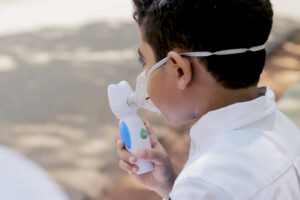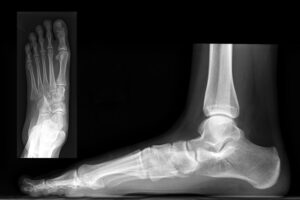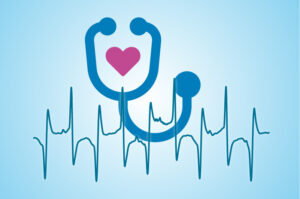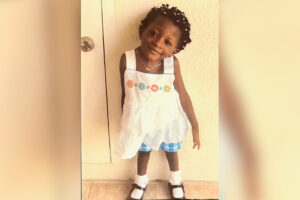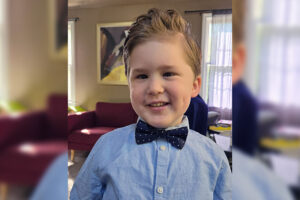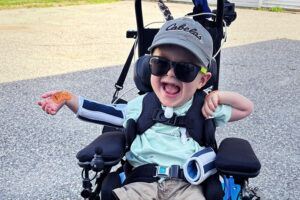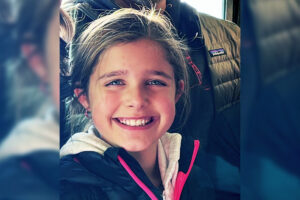EarlyBird: Addressing dyslexia through game play
Up to 10 percent of the population has dyslexia, yet many children are diagnosed only after struggling with reading for years. The stigma can cause low self-esteem, depression, and antisocial behavior. But imagine we could identify children at risk for dyslexia before they start formal reading instruction, then help them build the skills they need ... Read More about EarlyBird: Addressing dyslexia through game play
Will early intervention prevent asthma in school-age children?
Asthma affects about 1 in 10 children, often sending them to the emergency room or causing them to miss school. Allergic conditions in young children — like food allergies or eczema — are often a precursor. Susceptible children begin producing IgE antibodies, which trigger allergic reactions and spur the “allergic march” toward asthma. IgE antibodies ... Read More about Will early intervention prevent asthma in school-age children?
Novel procedure may bridge the treatment gap for symptomatic flexible flatfoot
Most children develop arches in their feet by early adolescence. About 20 percent, however, have pes planovalgus (PPV), also known as flexible flatfoot. Most children with PPV can participate in sports and other activities without issue, but others have ongoing pain in their feet that limit function and activities. Until recently in the U.S., children ... Read More about Novel procedure may bridge the treatment gap for symptomatic flexible flatfoot
Finding a possible genetic treatment for rare arrhythmias
Variants in a gene that plays a key role in heart function can cause potentially life-threatening arrhythmia syndromes known as calmodulinopathy. Calmodulinopathy is rare and causes arrhythmias that are poorly treated by current options. Boston Children’s cardiologist William Pu, MD, believes he has found a promising custom genetic treatment: antisense oligonucleotides that deplete the disease-causing gene product. ... Read More about Finding a possible genetic treatment for rare arrhythmias
Born with congenital scoliosis, Thelma looks to the future
Sixteen-year-old Thelma Alemnji probably enjoys student life more than most high school juniors. After all, up until last year, activities like drama club, debate club, and student government were out of reach. Born with severe congenital scoliosis and thoracic insufficiency syndrome, Thelma’s childhood and early adolescence were marked by regular hospital visits and frequent surgeries: ... Read More about Born with congenital scoliosis, Thelma looks to the future
‘We’re going to Boston’: Why Aydan’s family temporarily relocated for craniopharyngioma care
One evening in October 2022, 2-year-old Aydan Arguello arrived at Boston Children’s Hospital. It wasn’t a routine visit, but instead the final stop in an urgent journey from his home in South Florida. Months earlier, the toddler had been diagnosed and treated for a large brain tumor — but it was a related concern that led ... Read More about ‘We’re going to Boston’: Why Aydan’s family temporarily relocated for craniopharyngioma care
Curbing blood cancers by teaching immune cells to kill mutant stem cells
Blood stem cells, which give rise to all of our blood cell types, undergo a quality assurance process after they’re born. As the lab of Leonard Zon, MD, director of the Stem Cell Research program at Boston Children’s, has documented, immune cells known as macrophages interact with each newly born cell. They engulf and eat ... Read More about Curbing blood cancers by teaching immune cells to kill mutant stem cells
After a severe case of myelitis, ‘rockstar’ Maxwell is on the move
When Maxwell Lazarz’s mother, Jennifer, tells him he’s a rockstar, he just laughs and asks her what that means. But as this joyful almost-3-year-old zips around in his motorized wheelchair, cracking jokes and blowing bubbles, it’s clear that his mom is right. In fact, Maxwell has been defying expectations ever since he was diagnosed with ... Read More about After a severe case of myelitis, ‘rockstar’ Maxwell is on the move
Making a change: After a second opinion for spina bifida care, Sydney is thriving
At almost 10 years old, Sydney MacKay is sassy, spunky, and wants to be as independent as possible. Because she was born with spina bifida, part of that desire for independence means being more involved in her own care. Although Sydney underwent a surgical procedure a few years ago aimed at helping foster that independence, ... Read More about Making a change: After a second opinion for spina bifida care, Sydney is thriving
Full-family support sees Hannah and her parents through AVM surgery
Nine-year-old Hannah from Vermont is passionate about skiing; not much keeps her off the slopes. In fact, not much slows her down or dampens her energy, period. So, when she experienced a ruptured arteriovenous malformation (AVM) last spring, she wasn’t sidelined long. Her parents, Katie and Rich, credit Hannah’s remarkable recovery to her vivacious spirit ... Read More about Full-family support sees Hannah and her parents through AVM surgery



